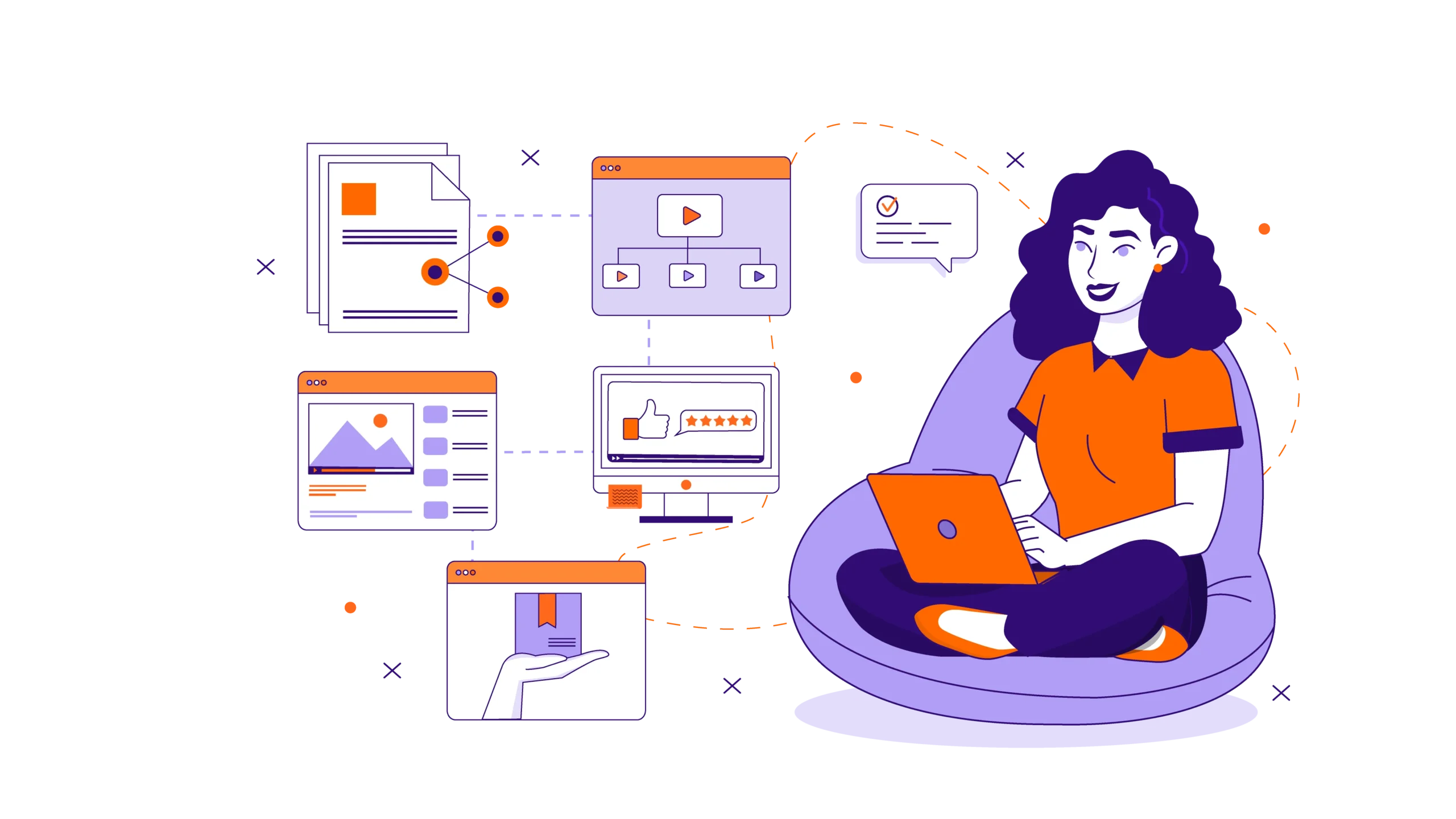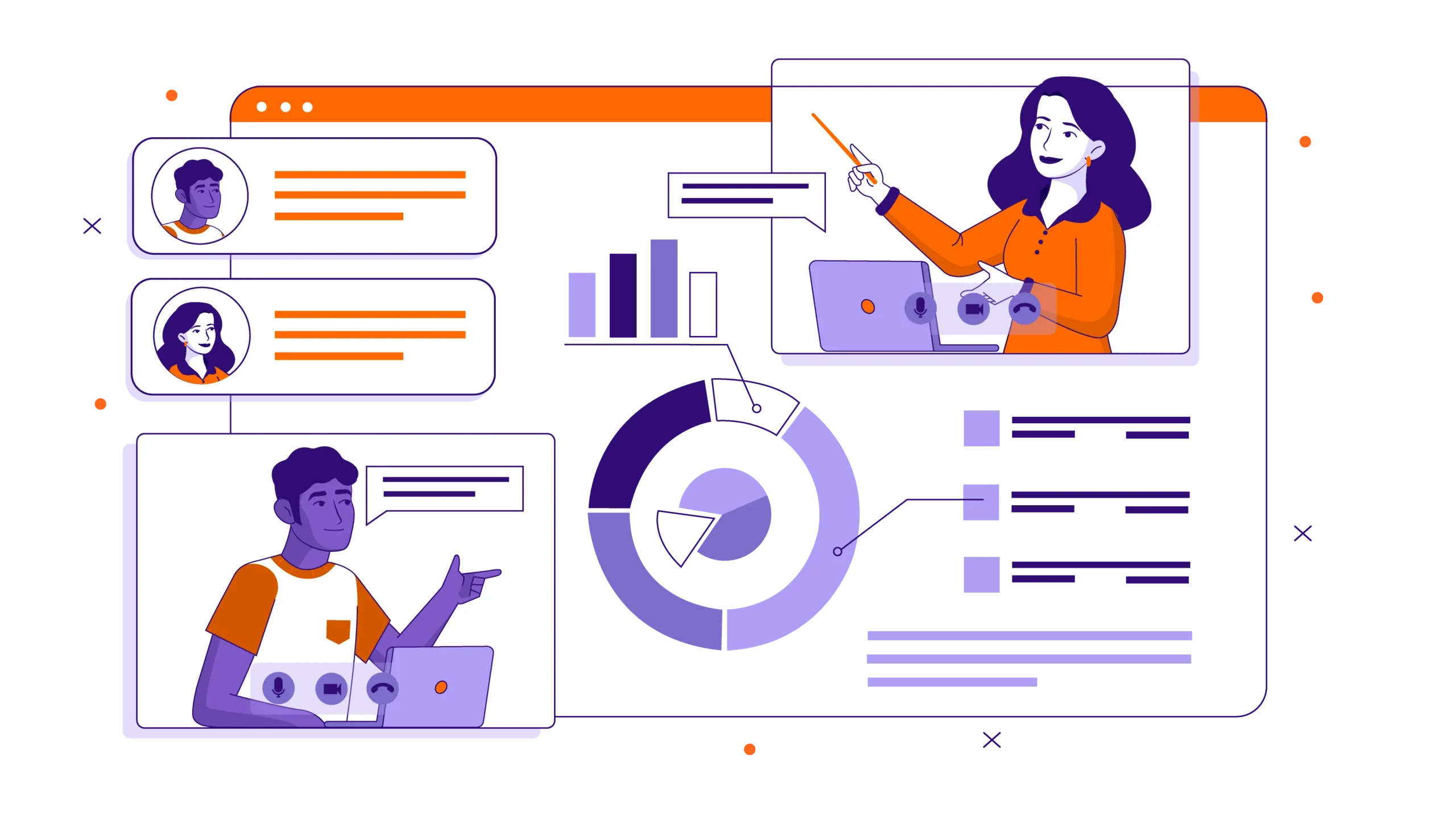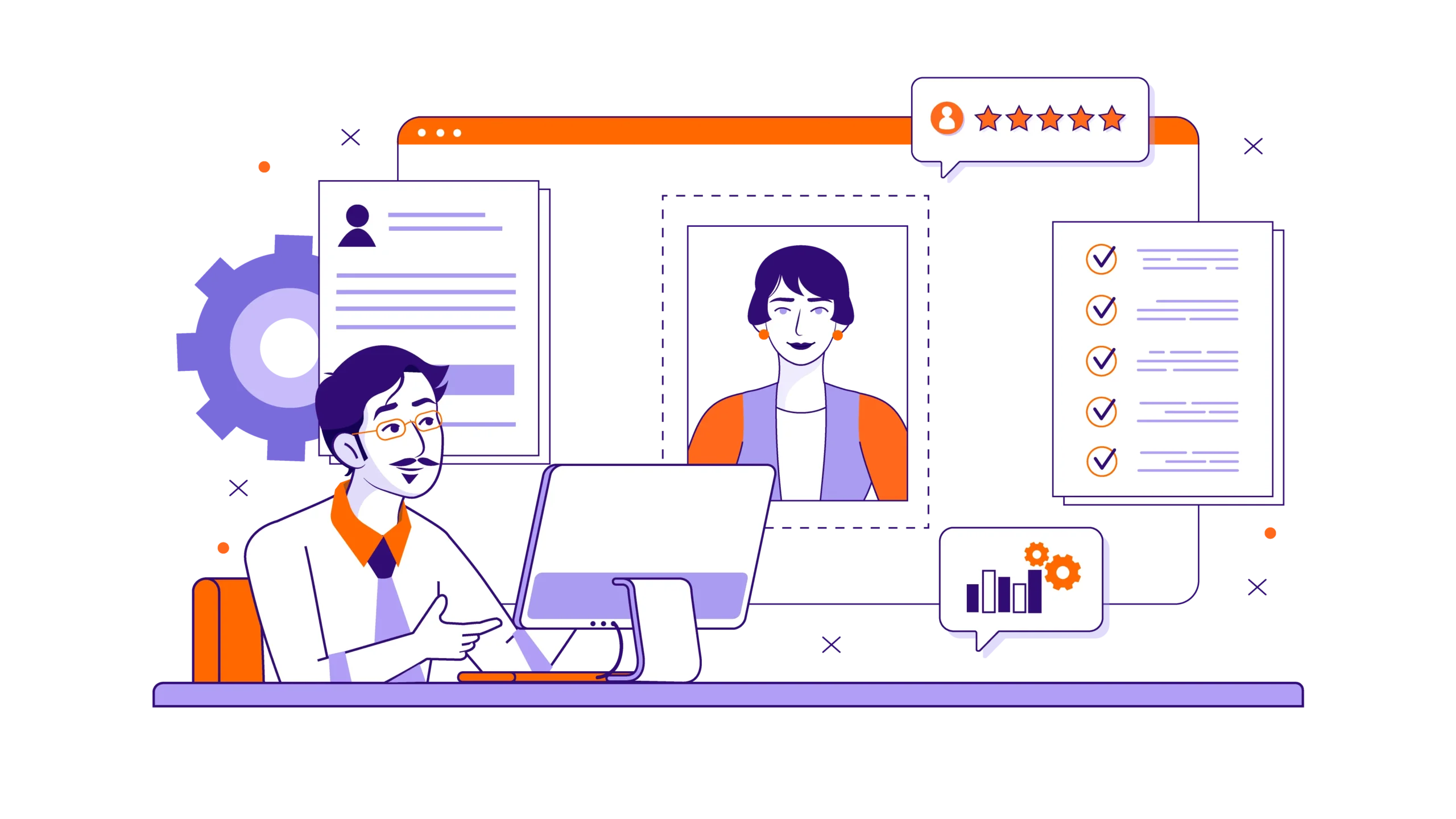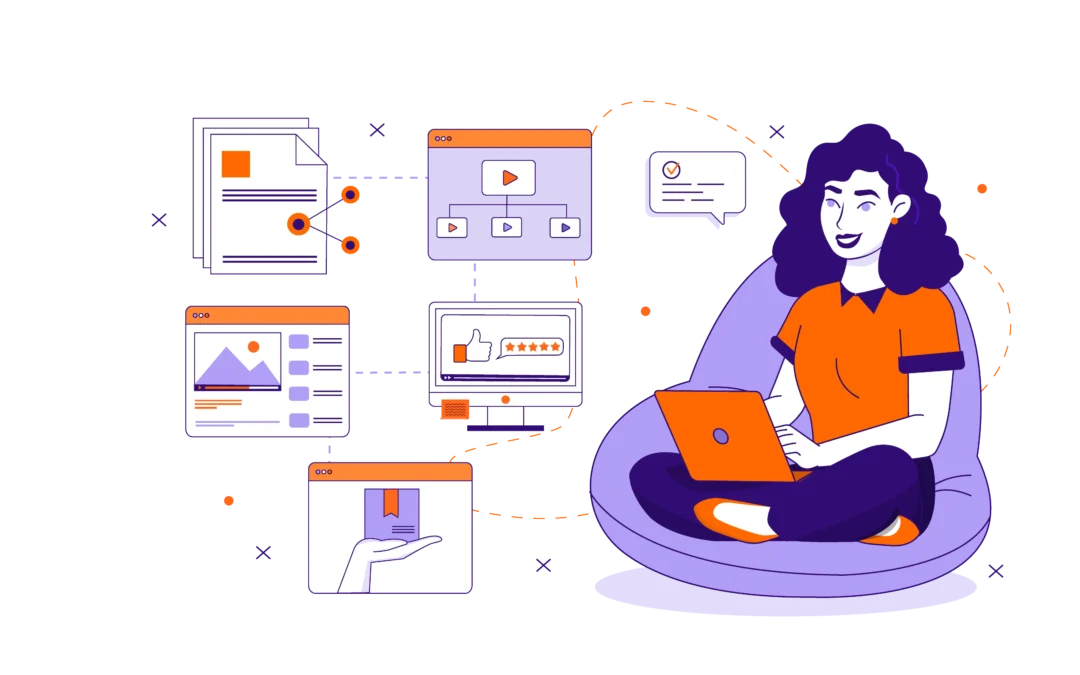
How to Develop Onboarding Training Content: 5 Steps to Make Your Content Micro-Learning Friendly
In today’s fast-paced work environment, bombarding them with lengthy training manuals or overwhelming presentations can quickly lead to discouragement and information overload
The key to successful employee onboarding Training, lies in delivering engaging, bite-sized learning experiences that equip new employees with the knowledge and skills they need to succeed. This blog post will guide you through five effective steps to develop micro-learning friendly onboarding training content, ensuring your new hires are set up for success from day one.
Why Microlearning for Onboarding?
Traditional onboarding programs often rely on lengthy presentations or dense manuals. These methods can be overwhelming and lead to information retention issues. Microlearning solves this problem by:
- Improving Knowledge Retention: Smaller, focused lessons are easier to process and remember.
- Boosting Engagement: Short, interactive content keeps learners engaged and motivated.
- Enhancing Flexibility: Microlearning modules can be easily delivered in various formats and accessed on-demand.
- Facilitating Reinforcement: Learners can revisit specific modules for refresher training.

5 Steps to Micro-Learning Onboarding Content
Now, let’s dive into the five steps for developing compelling micro-learning onboarding content:
Step 1: Identify Onboarding Needs & Learning Objectives
The foundation of any successful training program is a clear understanding of what employees need to learn and what they should be able to do by the end of onboarding.
Here are some key questions to ask:
- What are the core competencies new hires need to perform their job effectively?
- What company policies and procedures are essential for new employees to understand?
- What tools and software will new hires be using?
- What are the company’s culture and values?
Step 2: Chunk Your Onboarding Content into Microlearning Modules
Once you have defined your learning objectives, the next step is to identify the key skills and knowledge points that need to be covered. Analyze them and break them down into smaller, focused learning modules.
Here are some guidelines for microlearning module design:
- Length: Aim for modules between 2-10 minutes each.
- Focus: Each module should address a single, specific objective.
- Content: Use a variety of media formats (text, images, videos, simulations) to keep learners engaged.
- Interaction: Incorporate interactive elements such as quizzes, gamification, or polls to enhance understanding.
Step 3: Develop Engaging and Accessible Onboarding Content
Now that you have defined the structure and content of your microlearning modules, it’s time to bring them to life. Here are some best practices to follow:
- Clarity: Use simple language, concise explanations, and avoid jargon.
- Visual Appeal: Incorporate high-quality visuals, infographics, and animations to enhance understanding.
- Accessibility: Ensure your content is accessible to all learners by including closed captions for videos and transcripts for audio.
- Mobile-Friendly Design: Make sure your content is optimized for mobile devices as many users will access it on their smartphones or tablets.
Step 4: Integrate Assessments and Feedback
Evaluating learning progress is crucial. Integrate assessments within your microlearning modules using quizzes, scenario-based activities, or short reflections.
- Formative Assessments: Use quizzes or interactive activities at the end of each module to gauge learner understanding and identify any knowledge gaps.
- Feedback: Provide immediate feedback to help learners adjust their learning approach.
Step 5: Delivery and Support
Microlearning content allows for flexibility in delivery. Here are some effective ways to deliver your onboarding training:
- Learning Management System (LMS): Utilize an LMS to host your microlearning modules and provide a centralized platform for learners.
- Email Delivery: Schedule emails with bite-sized lessons throughout the onboarding process.
- Microlearning Apps: Explore mobile apps designed specifically for delivering microlearning content.
Additional Considerations:
- Spacing and Repetition: Microlearning allows for spaced repetition, a learning strategy that promotes long-term knowledge retention. Schedule refresher microlearning modules throughout the onboarding journey.
- Personalization: Where possible, personalize your microlearning content by incorporating new hires’ names, team information, or company-specific examples.
- Alignment with Company Culture: Ensure your microlearning content reflects the company’s culture and values, fostering a sense of belonging in new hires.
By following these steps, you can develop a micro-learning friendly onboarding training program that sets new hires up for success. Remember, effective onboarding is an investment that leads to increased employee engagement, reduced turnover, and improved job satisfaction.

Ready to Take Your Onboarding to the Next Level?
At Ninja Tropic, we are passionate about helping companies build engaging and effective onboarding programs. Our team of instructional designers and learning strategists can help you:
- Develop custom microlearning modules that align with your specific onboarding needs and learning objectives.
- Implement a blended learning approach that combines microlearning with other training methods for a comprehensive onboarding experience.
- Leverage the power of an LMS to streamline content delivery, track learner progress, and provide ongoing support.
Reach out! Book a free call and receive a personalized quote for your onboarding training program!
DOWNLOAD YOUR KEY TO KNOWLEDGE
Access Valuable Resources to Fuel Your Learning Journey


